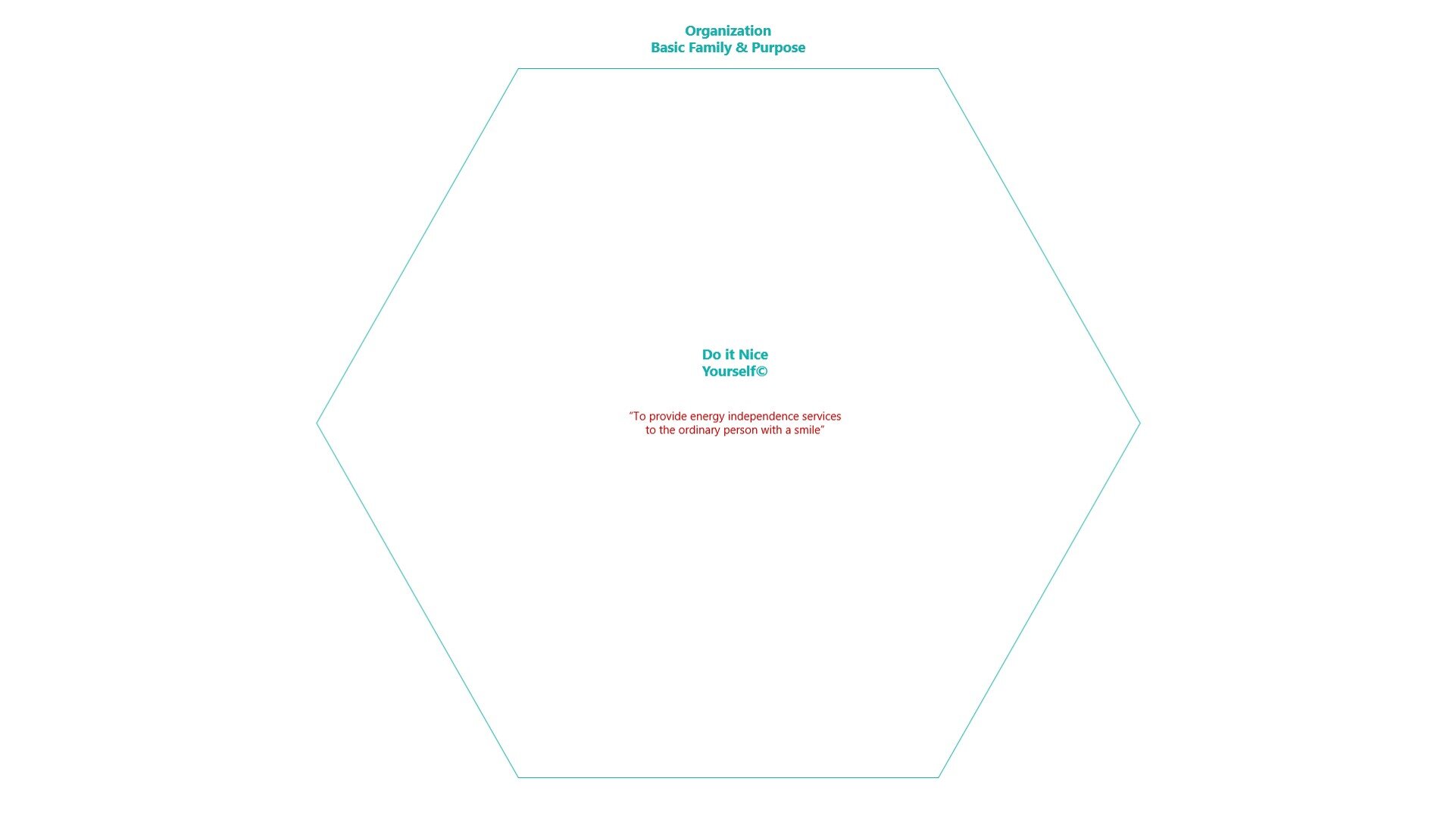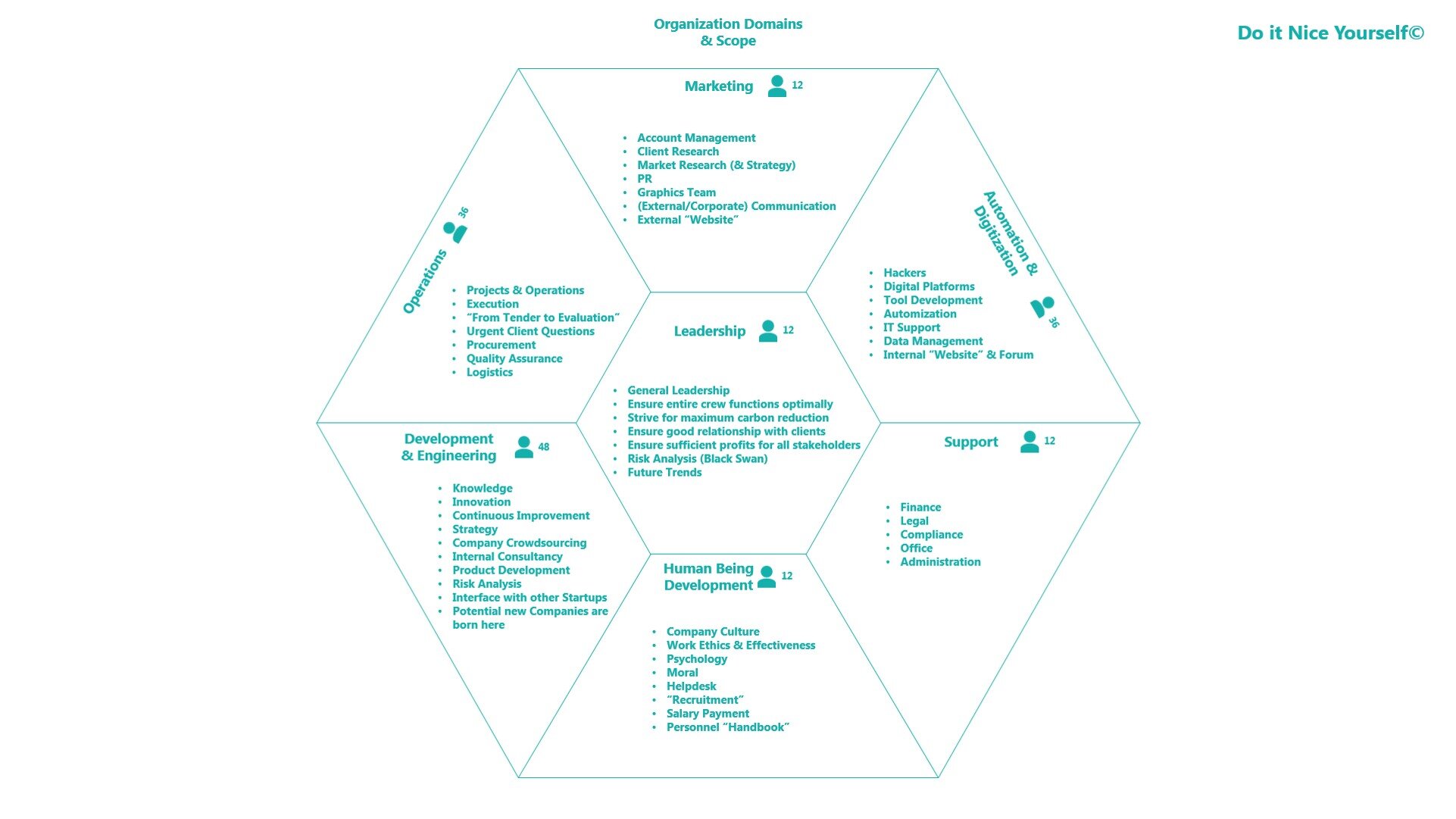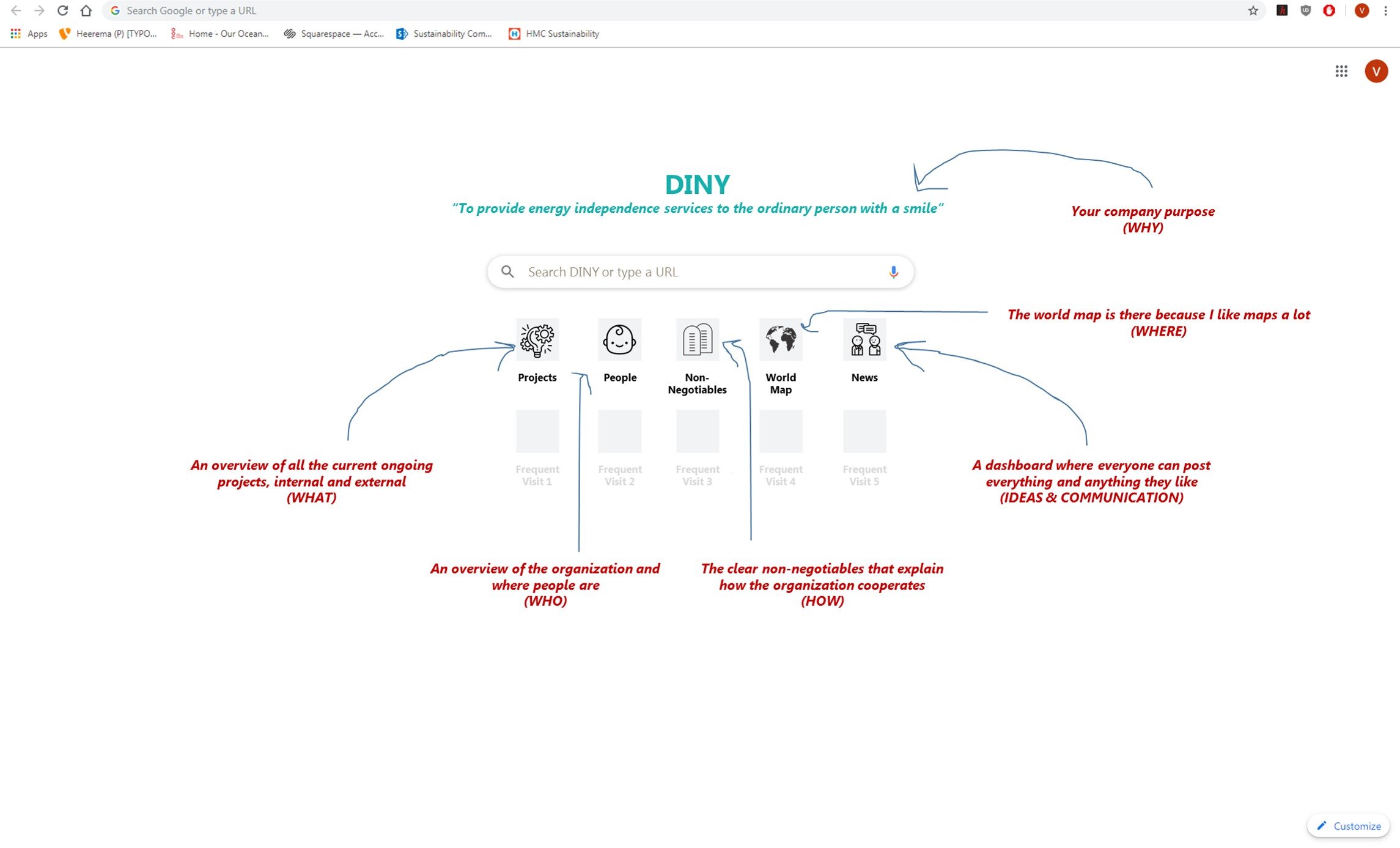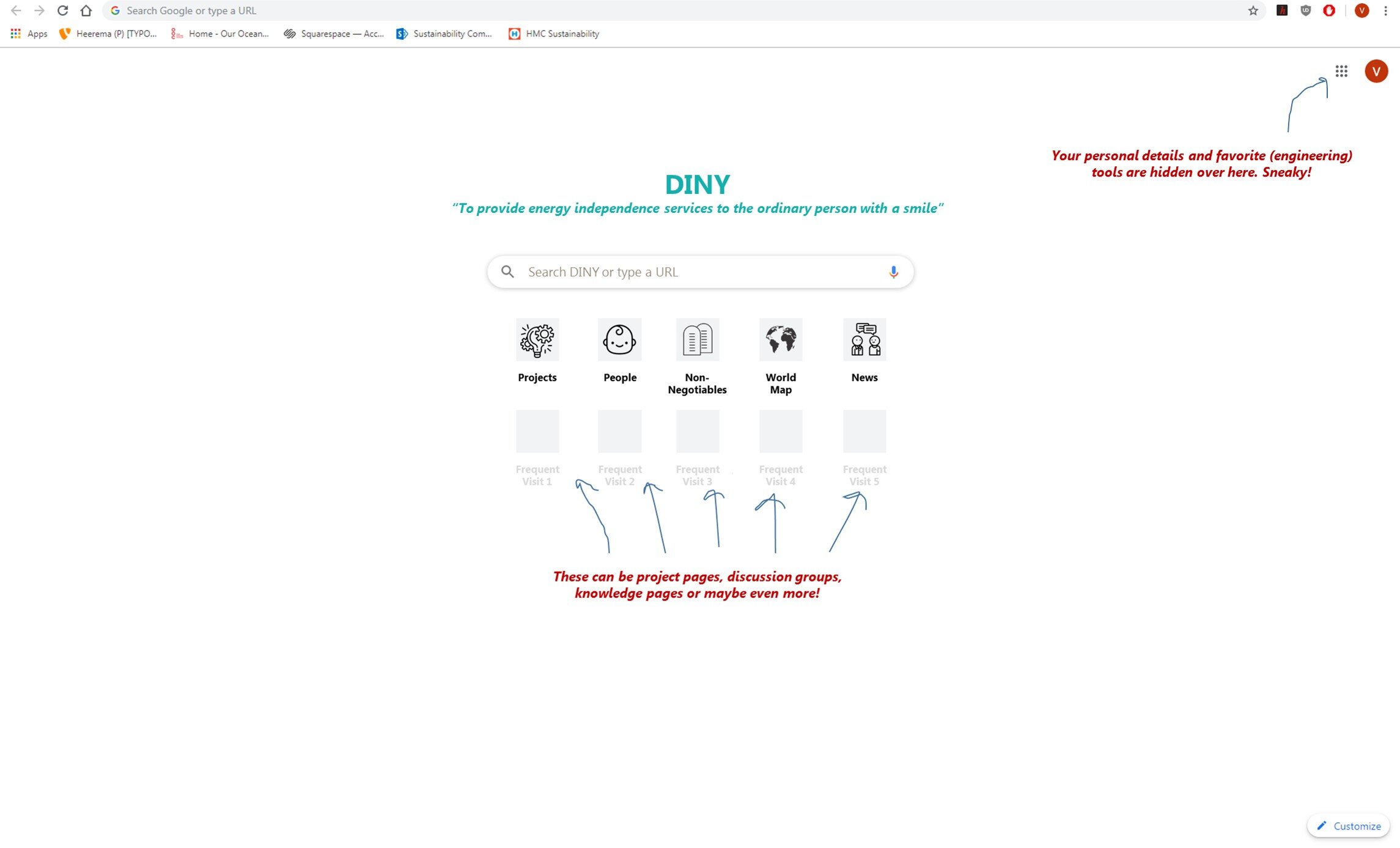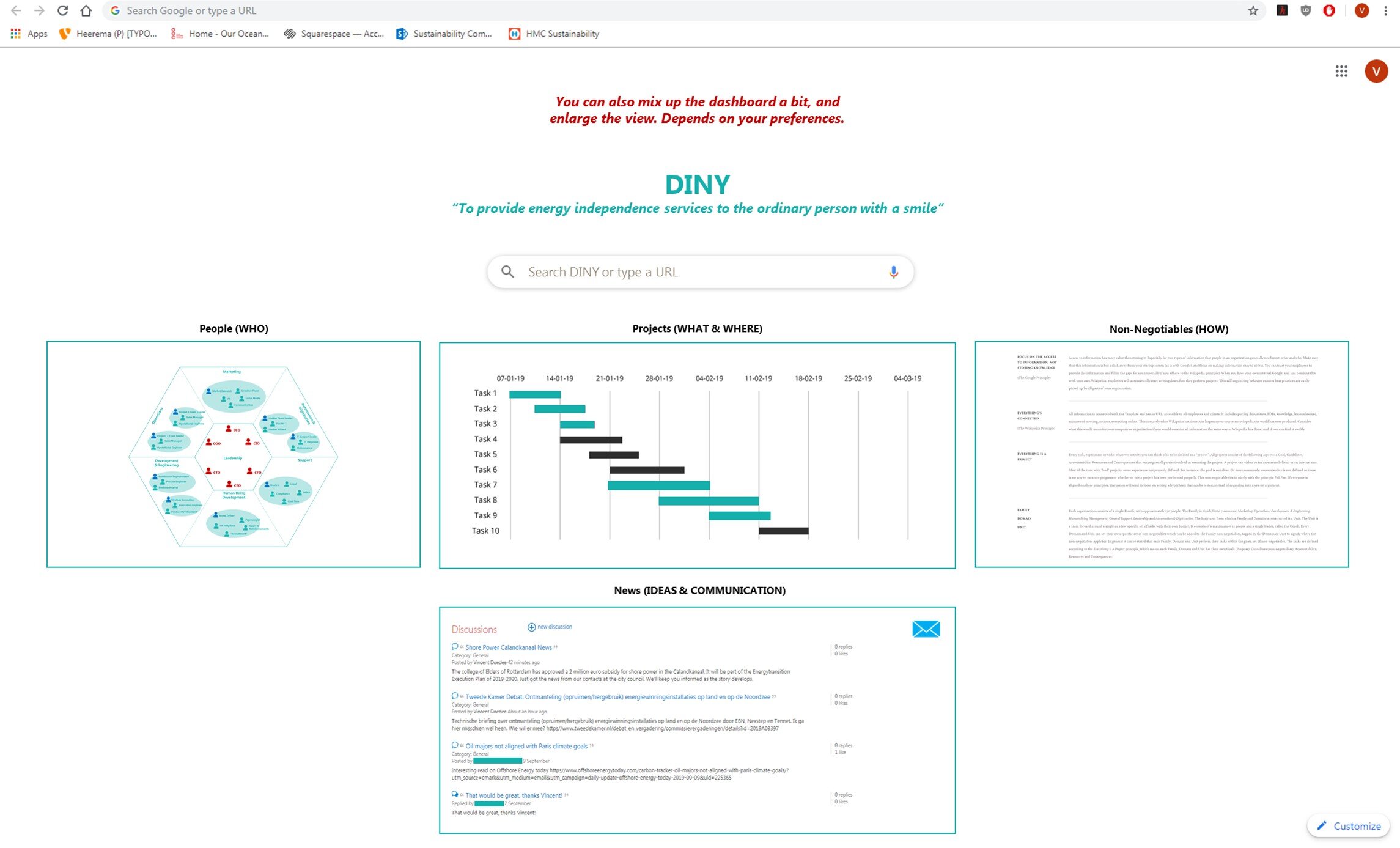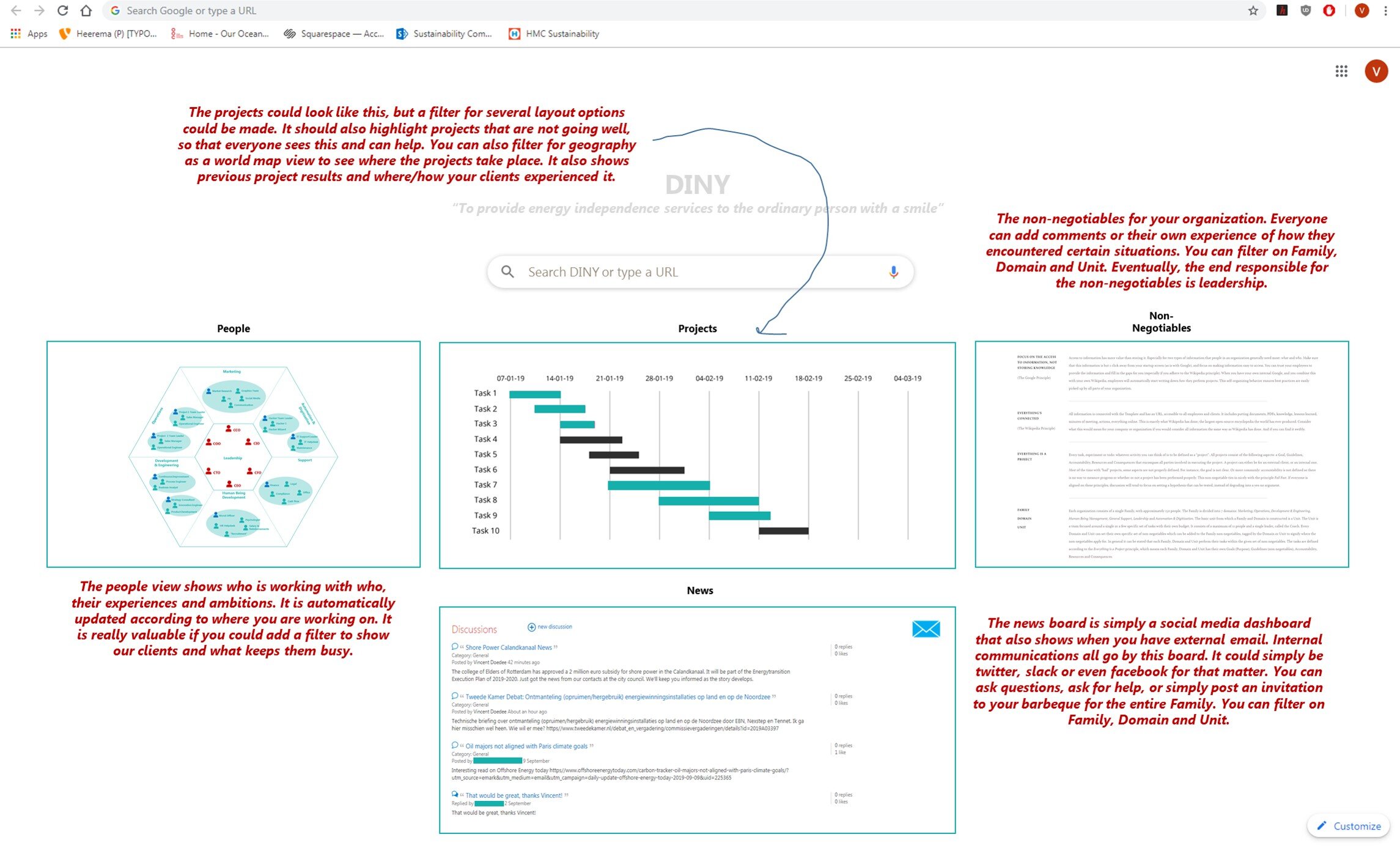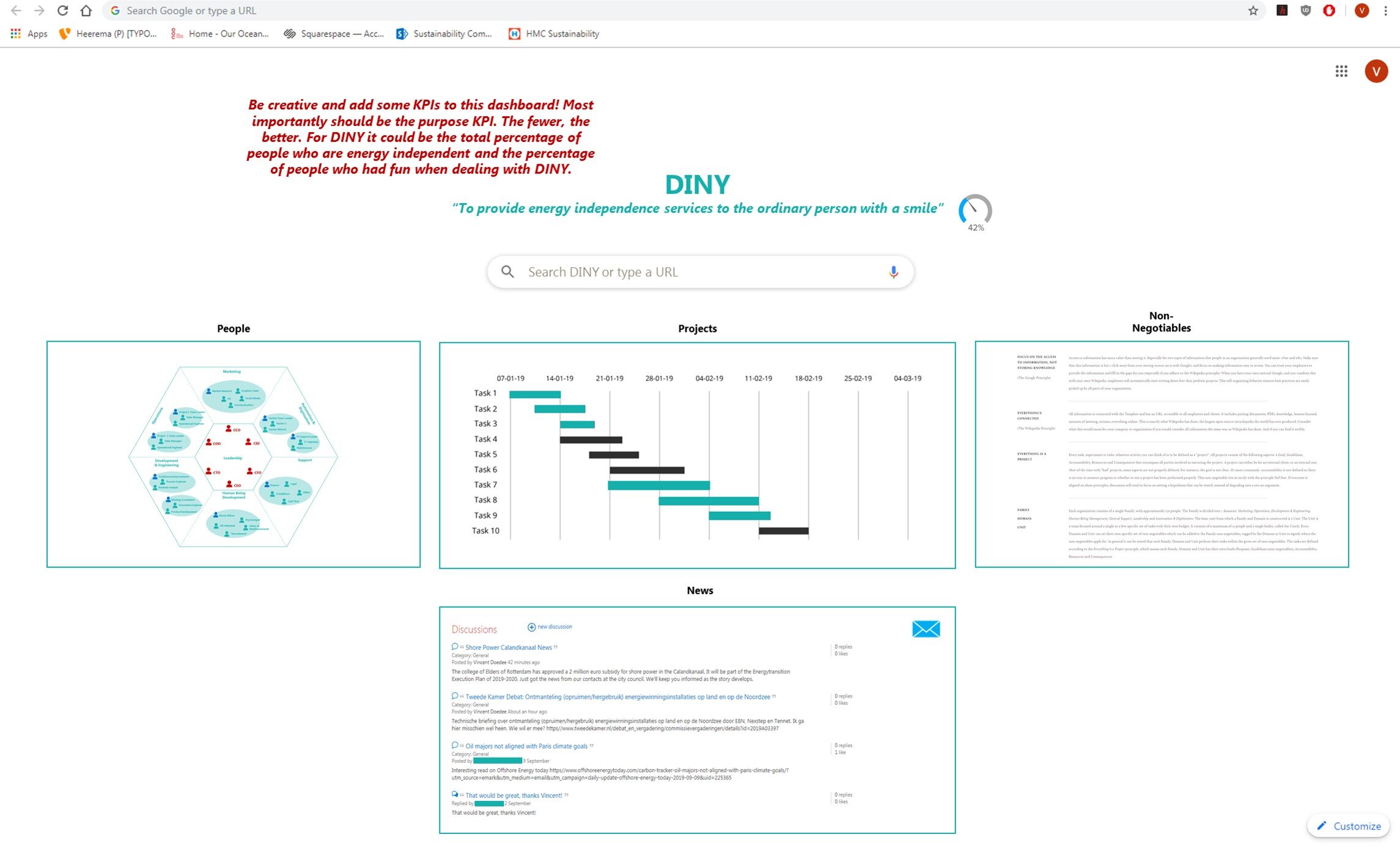Building Enduring Businesses - Part Deux
In order to build your own sustainable organization, you need to adhere to the following steps. Define and clearly communicate your purpose (the why). Define a set of clear non-negotiables (the how). Next would be to self-organize according to the ‘Family principle’ and create a ‘Template’, which is a clearly defined tool with which your organization communicates both internally and externally. Your entire organization should revolve around one thing: to learn faster than anyone else in the business.
If you are like most other people, you like to complain a lot.
Although we would probably never admit it to ourselves and others, sometimes it feels like the number one sport of most people is complaining. Especially at work, about work. And most of us bring it home. Be honest with yourself: when was the last time you came home to your loved ones or friends with honest enthusiasm about work? And of course, we all know better. Everyone knows how things “should be done”.
Well, after hearing “if I was in charge, then…” a little bit too much, I decided to write down how I would do things if I actually was in charge of a project-driven organization. I will be improving on the same principles and ideas of a previous article of mine called Building Enduring Businesses. I will guide you through three easy steps in order to create an enduring business, starting from ideation all the way to an interactive Template that can be applied to any project organization. In order to make it tangible, I will be working out an idea for a business I had for quite some time. It is called “Doe het lekker zelf” in Dutch, which can loosely be translated to “Do It Nice Yourself”, or DINY. It is a company that focuses around providing decentralized energy solutions to everyday people with a smile. Let’s start there.
It starts with an idea - “Do It Nice Yourself”
Every 100 billion dollar company starts with a simple idea. It can be a question, such as “why do they not have something like this?”. Or it can again be a complaint: “I hate it when this happens. Why can’t they fix this?”. Things like these are the start of any business empire. A simple idea.
Some time ago, me and some of my best buddies in the world had such a simple idea. We wanted to provide fun, easy to build do-it-yourself packages for solar and wind energy at home. The rational was as follows.
Most of us know by now that solar and wind energy are becoming very cheap. It is becoming more abundant and we are starting to accept it will be the future of energy. Then how come so little of “us” have solar panels on our roofs? Or a small wind turbine? Living in the Netherlands, wouldn’t it be cool to have a small windturbine in your yard or on your balcony which provides power? Combined with a small battery that could sustain you for a few hours to maybe a day (most importantly the morning and evening peak), you would provide energy independence to people in a low-key way. In order to improve cost and fun, we would provide the solar/wind energy in a do-it-yourself package. It could be compared to shopping at IKEA online, but you can only choose between a windturbine or some solar cells. It gets shipped to your home and you can build your own energy supply!.
In a nutshell, the idea is simple: for 100 bucks, you become energy independent in a fun way! We called it Do it Nice Yourself, or DINY. So, armed with such a great idea, how do you capitalize on it and how do you create a company around it?
Why - From ideation to purpose
Any company’s vision or purpose (I prefer purpose), takes a long time to draft and is subject to interpretation. Even when a company is well established, it takes constant refinement and tuning to ensure the entire organization is properly focused around a common goal. That is what you need a purpose for. It is “simply” a banner for everyone to rally around.
A clearly defined purpose not only sets expectations for everyone, it sets the framework of boundaries for what a company should, and should not do (aided by the non-negotiables in the second part). At the moment, I propose the following simple purpose that can potentially be applied to any company.
“To [verb] a [goal] [within defined parameters]”
— Company Purpose
Where the defined parameters should include a definition of your client or market cap. The statement above does not really make any sense without a proper example. For DINY, it could be something like this.
“To [provide] [energy independence services] [to the ordinary person with a smile]”
— Do it Nice Yourself Purpose
Where energy independence services are the windturbines and solar cells. These could be accompanied by energy storage systems, preferably Iron-Nickel batteries. The ordinary person is considered everyone with a median income or below. This could be the definition of DINY’s client for now. The smile sets the culture and feel of DINY. It should always be fun. As you can see, a properly defined purpose sets a very clear goal which people can unite behind. It also provides a definition of the client or at least the maximum market cap, which helps the people in your organization focus even more. The smile-attribute to the purpose is to me very important, as that is what makes your organization special. Companies such as CoolBlue do this for example, always going the extra length for a smile. This trickles down into their entire organization. Their meeting rooms all have a theme for example. There is actually the Pacman-room, or the Central Perk meeting room from Friends. These additions set the environment and culture your organization functions in and should not be underestimated.
Naturally, a clearly defined purpose is but the start of the process. The most important reason why it is such a long and lengthy exercise, is that everyone should feel comfortable with it and able to explain it to others. In the end however, no matter how you name it or how you write it down, a purpose should include the following:
A clear goal for people to rally behind.
A definition of your client and market parameters within to work with, so that everyone knows who they are doing it for.
In my opinion the goal should be something that is obtainable, otherwise it is not tangible enough for most people. Also, the purpose does not state how you are going to do this. This is defined by clear non-negotiables.
How - Clear non-negotiables
In order for any organization to cooperate and grow, a set of clear non-negotiables are required. Non-negotiables are the rules everyone in the organization adheres to in order to achieve the purpose set by this organization. They provide a framework and act as guidelines for all members of the organization. Other words for the non-negotiables could be organizational principles, company rules or “commandments”. They prescribe simply how (or how not to) to behave in certain situations and most prevent discussions that cost a lot of energy when you are growing.
You can compare this to how traffic is directed. In most countries, only a few set of rules cover most of the traffic situations you encounter. For example, traffic coming from the right has priority. This is a non-negotiable that makes it easy for people to navigate crossroads. Another example is the non-negotiable that you stop for red traffic lights. Without these non-negotiables, traffic would be unmanageable. With these rules, billions of people move around the world every day (though there are still plenty of accidents even with these rules).
Potentially, the number of non-negotiables can be limitless. Just like your average law book. Less is more however. The best organizations work smoothest because everyone knows the few rules they need to know in order to cooperate. For DINY, I would propose to have 10 non-negotiables which everyone should know by heart and abides to. Below are some of those non-negotiables I would use for DINY (or any other company if I was in charge for that matter). They are only briefly explained. For a full elaboration of all the non-negotiables, visit this page.
Fail Fast
The only way to learn, is to fail. Therefore your entire organization should revolve around failing as quickly, safely and in the cheapest way possible. So, if you have an idea, test it. Value experimentation over discussion. The only way to truly know whether an idea is “good” or “bad”, is to execute said idea in a experiment where a value hypothesis is defined and metrics to measure the outcome. This is one of the core premises of the Lean Startup and explained beautifully in that book.
Focus on access to information, not storing knowledge (The Google Principle)
Access to information has more value than storing it. Especially for two types of information that people in an organization generally need most: what and who. Make sure that this information is but 1 click away from your startup screen (as is with Google), and focus on making information easy to access.
All information has an URL (The Wikipedia Principle)
All information is to be placed in a single, online environment accessible to all employees and clients. It includes putting documents, PDFs, knowledge, lessons learned, minutes of meeting, actions, everything online. This is exactly what Wikipedia has done; the largest open-source encyclopedia the world has ever produced. Consider what this would mean for your company or organization if you would consider all information the same way as Wikipedia has done. And if you can find it swiftly.
Everything is a project
Every task, experiment or todo: whatever activity you can think of is to be defined as a “project”. All projects consist of the following aspects: a Goal, Guidelines, Accountability, Resources and Consequences that encompass all parties involved in executing the project. A project can either be for an external client, or an internal one.
The Hive Mind rules
A “Hive Mind”, which combines AI and human networks, amplifies the intelligence of networked business teams, enabling significantly more accurate forecasts, predictions, decisions, and insights. An example of such a tool is Swarm. When used properly, it fosters an environment of cooperation, experimentation and effective decision-making.
Perfect is the enemy of the good
Aim to satisfy, not perfect. Striving towards perfection means you will never finish you project. There is always something to improve. Instead you should focus on satisfying pre-determined needs as quickly as possible.
Meetings are good
If and only if everyone abides to these meeting principles.
Ask in person. Then by phone. No internal emailing.
It is generally estimated that people misinterpret 50% to 80% of emails they receive. How to solve this? Easy. Make the agreement that you will not use email for internal use. There are plenty of old-school and new-school technologies that can be used for internal communication, such as Slack, whatsapp, Lync or simply the phone. Combined with the principle of All Information has an URL, this is a very effective way of streamlining internal communication.
These non-negotiables embody and incorporate the values of a lean, flexible, decentralized organization that is poised for rapid continuous improvement and learning. The next thing on our list is to create the organizational framework around the common goal and values that can adapt and improvise faster than your competitors.
A clear organizational framework
How should an organization be organized in order to achieve maximum productivity, happiness and clear communication lines? Easy. You let it organize itself.
I believe in self-organizing behavior in order to create a flexible organization that adapts itself to provide the correct solutions for an ever-faster changing market. Combine this with a strong experimental mindset and the use of cutting edge 21st century technology, and you can ensure your organization learns increasingly faster than your competitors. It is my firm believe that the most important thing for your organization is to learn faster than your competition.
These principles are nicely visualized in the below graph, which will be elaborated upon more in the subsequent paragraphs. The entire goal of the organizational philosophy elaborated in the subsequent sections, is to create a self-governing organization revolving around a comprehensible set of non-negotiables. Combined with a strong sense of social cohesion in the group, it is believed this set-up is the key in making a flexible organization.
Do what evolution does
In order for the company to grow properly, complexity should be reduced to a minimum whilst flexibility should be increased as much as possible. Flexibility should always be put in contrasted to the purpose and non-negotiables. It is not about constantly changing, but continuously improving. The goal is not to constantly re-invent yourself, but ensure you are constantly adapting and following your core values to improve yourself. It is a balance between focus and adaptation. The same laws of nature (evolution) apply to business: those who adapt best to their environment will survive.
So how do you actually adapt to your environment? The key here is simply reducing the costs of experimenting, both in time and money. This is ultimate adaptability. I’ll let Jeff Bezos do the talking here.
“What you really want to do company wide is maximize the number of experiments you can do per given unit of time. If something’s really big – like the big bet we’ve made on Amazon Web Services – then sure, you can do only a limited number of those, so you spend more time thinking about them and talking them through. Somebody wears the black hat and makes the case for why not to do it, and somebody else puts on the white hat and says why it is actually a good thing to do. But since the outcomes of all these things are uncertain, if you can figure out how to conduct an experiment, you can make more bets. So the key, really, is reducing the costs of the experiments.
— Jeff Bezos, CEO of Amazon
A decentralized organization
So we want to create a flexible organization, that can rapidly adapt. This is ideally done in a flat, non-hierarchical manner to ensure smooth communication. Why? Because information flows fastest if everyone is directly connected to everyone, without intervention of middle men that serve as information bottle necks. You can turn this example upside down.
In a perfect hierarchical system, all the information needs to flow through a single person, which obviously creates great amounts of delay. We do not want that. Then what do we want? We want to have a our employees organized in such a way that they work together as a tightly-knit family.
Meet the Family
Let’s talk numbers here. The maximum size of your organization would ideally be around 150 people. This rough number, called Dunbar’s number, is a suggested cognitive limit to the number of people with whom one can maintain stable social relationships. It determined by the size of our "limbic system", the part of your brain that mostly regulates social behavior. It ensures people will still feel part of a “tribe” and that social control is enforced on each other.
This philosophy is taken from "The Lattice Organization – A Philosophy of Enterprise" by Bill Gore. His company with thousands of employees uses a similar approach. It has hundreds of these “tribes” working together. Armed with this information we know we can grow larger than 150 people. But for now, with the current purpose and non-negotiables, 150 persons is DINY’s maximum size. We call this a “Family.” Who knows, we might have multiple Families someday but we will let future us handle that problem.
We can now construct DINY’s first organizational chart. Next thing we need to do is distribute specific sets of roles and responsibilities over the Family.
Subdivisions of the Family - “Domains”
The Family is divided into several “Domains”, each domain focusing on a specific aspect which is important for any project-driven organization in the 21st century. These are Marketing, Operations, Development & Engineering, Human Being Management, General Support, Leadership and Automation & Digitization. Each Domain has a specific purpose, responsibilities and focus areas. For example the Operations Domain focuses on the execution of projects (duh). General Support is focused on ensuring finances are in order and provides legal support to other Domains. This provides us with a refinement of our organizational chart.
The basic building blocks of the entire organization - “Units”
Simply dividing up a group of people into several Domains with responsibilities is not how it works in real-life however. We need something more tangible in order for our organization’s employees to work properly and be motivated. We need more of a team, with a coach leading it. So why not take an actual sports team example?
In order to create proper social cohesion within the Family and Domains, I propose to create teams called a “Unit”. These exist, just like in sports, of a maximum of 11 people with a single “Coach” as a leader. Each Unit is responsible for a a few tasks, with its own personal purpose. The Coach is more than simply a manager. The coach is a leader, and has the responsibility to ensure all of its players achieve their full potential. In their work, but also their personal lives. The Coach can therefore, together with its Unit, create non-negotiables that are related to their unit. The same could apply to Domains if required.
Units should act as self-organizing vehicles within the Domains and Families. They will have their own budget with a set of specific tasks and it is up to the unit on how to spent their budget. This includes their salaries. I believe this is one of the primary ways to delegate responsibilities all the way to the lower levels of your organizations, also called stewardship. People will take responsibility over their tasks and can figure themselves out how they do it given the non-negotiables they are provided with.
We end up with something like in the below figure, where an example is provided and some example roles are given. Now we have almost arrived at the end of it.
Lean Communication
Despite a clear set of rules and well-defined organization, the real world will be messy. In reality it might look much more like the figure below, where all kinds of communication lines, self-proclaimed internal groups and links crisscross one another.
People tend to work that way. We are very good at making chaos together and then complain about. it We make bonds and socialize in all kinds of ways, usually outside of “protocol”. This is not wrong. On the contrary. These networking effects provide intense value by cross-pollinating ideas and experience throughout the organization. However, some sense of order and management needs to be achieved within such a decentralized organization. That is why a proper internal communication system or platform needs to be set up.
The final step in creating a flexible and manageable organisation is to “pour” the above mentioned organizational structure into a proper “Template”. This Template can be viewed as a suite of (existing) 21st century technology (mostly software and different kinds of social media). It is a way of working that combines the common goal, the people, the non-negotiables and all the information and work that is being done by everyone in the organization. For example, the Google Suite of technologies can be used as a basis, though there are many other providers of these kinds of software such as Slack for example.
I believe it is best to have your organization create your own Template, including software specifically tailored for your purposes. It should be constructed by the Automation and Digitization Domain. This may sound like a tremendous amount of work. Which I admit it is. The upside of doing this tremendous amount of work however, is that you will become the master of your own universe. I am serious.
Creating a Template dedicated to your own industry, which Clients can interface with and even competitors copy from you, will ensure you set the tone in your industry. It also ties in nicely with the open source and networking values we have defined earlier.
Based on these systems and the Domain/Unit subdivision, the Template can be integrated with only a handful of KPIs on which the basic functionality of the company can be overseen. It should again be clear that all attainable information from members of the organization should be digitized and accessible on a URL. The heavy dependence on these decentralized systems are but one of the reasons for a specially appointed Automation and Digitization Domain. Another side benefit of using these types of decentralized communication, is that they facilitate the ability to monitor real-time and provide data for experiments.
If you actually make it to this part of the article, you must be really interested to see the Template for DINY. Congrats for reaching it this far, I will no longer keep you waiting.
Template - the end result
In the end, you would want only a single interface with which your company and its people connect to one another and the outside world. All the applications, programs, software or knowledge is contained within that interface - the Template. In fact, all the theory and knowledge of this article is build around constructing this single Template. To understand it, you can spend hours reading books about business, organization, human psychology and start-ups. The work with it, you only need to ensure one thing: when you open your laptop or smartphone, the first thing you see is this Template.
It should again be stated that the Template is not a single “program” or software package. It is merely an interface, a GUI. It is a single “place” in which everything in your organization is connected to. In the future I hope to actually develop such a Template which can be used by others as well. I would first have to brush up on my programming skills however.
Those observant few of you can probably spot the fact that I am borrowing a lot from Google. That is totally true and I am not ashamed to admit it. I believe in what I call the “Roman Principle”, which is to copy and improve everything you encounter which works better than what you do now. Romans did it with a lot of stuff (the Spanish blade, Greek Gods, etc.). As long as you do not infringe copyright laws and get caught with it, you are golden. I hope Google won’t mind me promoting them.
Sources and Further Reading
The above mentioned ideas, values and principles are taken from only a handful of sources. These are:


